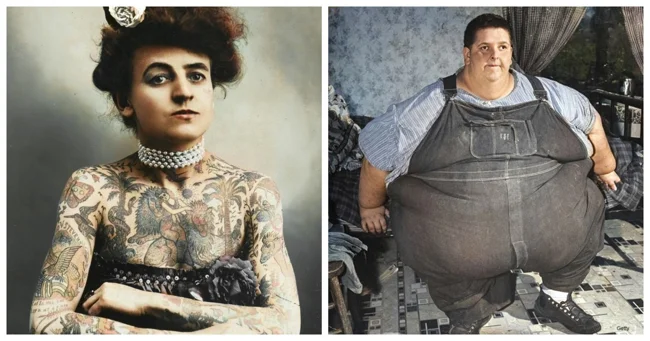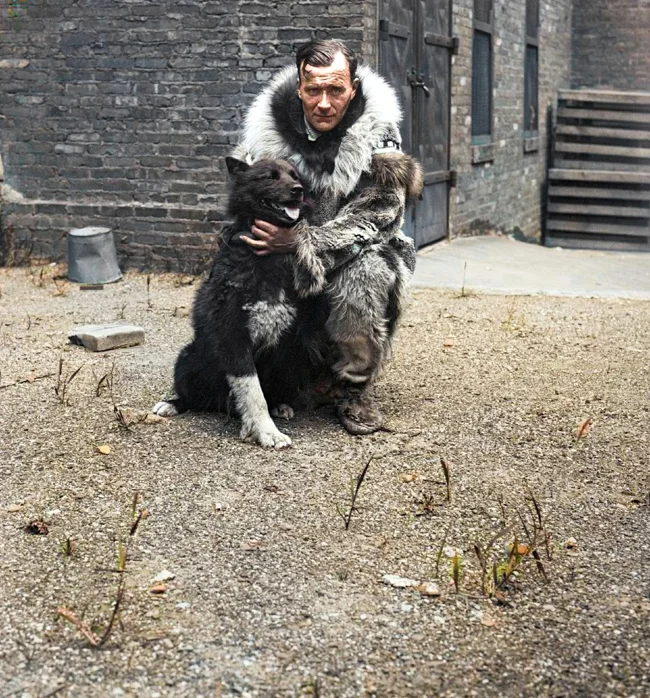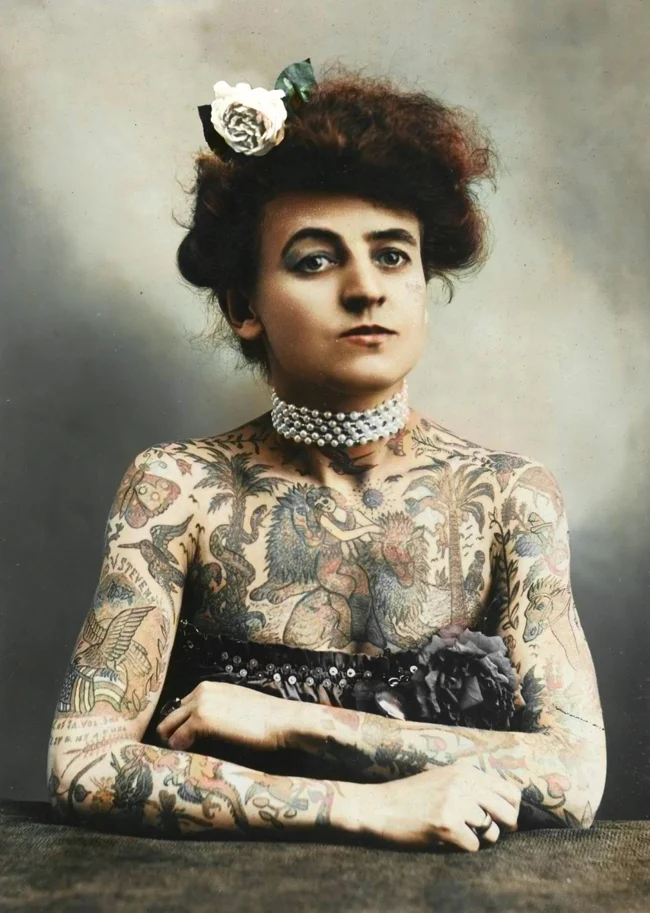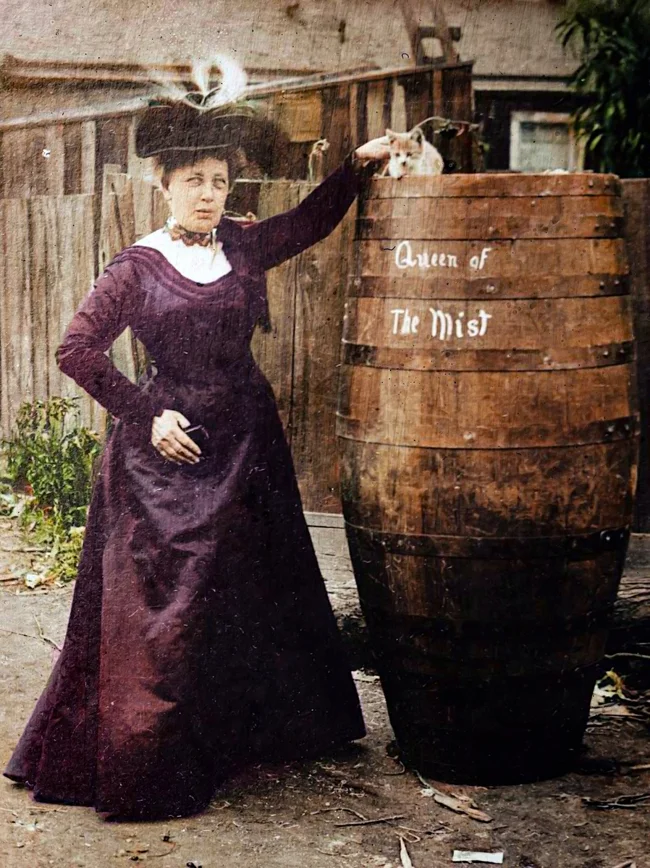Several interesting stories from the lives of unusual people (5 photos)
Continuation of the column with interesting and slightly strange personalities who were born in the 19th-20th centuries. 
Gunnar Kaasen and Balto 
Norwegian explorer, musher and gold miner Gunnar Kaasen became famous thanks to his participation in the famous mercy race of 1925. In early 1925, a diphtheria epidemic broke out in the settlement of Nome, Alaska. To save the inhabitants, they needed serum, which was located in Anchorage, a city located a thousand miles from Nome. Due to an ice storm and a severe snowstorm, planes could not take off, so the solution was found in delivering the medicine by train to the city of Nenana. The remaining 1,085 kilometers (685 mi) had to be covered by dog sleds, the only available transport in such harsh conditions. The final leg of the route - 52 miles (84 km) from Bluff to Nome - was entrusted to Gunnar Kaasen's team, led by a dog named Balto. This brave dog demonstrated exceptional endurance and navigational skills. The route turned out to be extremely difficult: once the dogs almost died while crossing a river, and another time the sled overturned, and the box of serum fell into deep snow. Gunnar had to spend precious time getting it. After arriving in Safety at 2 a.m. Sunday, where Ed Rohn was to take over the next stage, Kaasen decided to continue on his own since Rohn was asleep and time was of the essence. The team had already passed the most difficult part, and the dogs were doing well enough. Gunnar decided to continue on to Nome, which was still 21 miles (34 km) away. The snowstorm had gotten worse, but Balto led the team confidently, staying on track even in the thick blizzard, when, according to Kaasen, he could barely see his hands in front of his face. The team reached Nome at 5:30 a.m. on February 2, having covered 53 miles (85 km) in 7 1/2 hours. Despite the freezing temperatures, the serum remained usable, and thanks to it, the epidemic was stopped in just five days. Exhausted but heroic Balto, the other dogs and Gunnar Kaasen himself were greeted as true heroes in the United States. Their feat became a symbol of courage and selflessness.
Maud Wagner – the world's first female tattoo artist, 1911. 
Maud Stevens Wagner was an American circus performer who went down in history as the first professional tattoo artist in the United States. Maud was born in 1877 in Emporia, Kansas. Her destiny changed in 1904, when she met her future husband, aerialist, acrobat and tattoo artist Gus Wagner. They met at the Louisiana Exposition, where Maud worked as an aerialist. The tattoos that Gus was demonstrating made a huge impression on her. Instead of a romantic date, she asked him to teach her the art of tattooing. Having become Gus’s student and later wife, Maud mastered the tattoo technique and covered her own arms and body with brightly colored patterns. She learned to do traditional tattoos using the “hokey-pokey” method – by hand, without the use of electric machines. Despite the fact that the tattoo machine was invented back in 1891, Maud and Gus preferred the classic approach. They became the last famous artists who worked exclusively by hand. The Wagners spent a lot of time in the circus, combining the roles of tattoo artists and “tattooed attractions”. They traveled around the United States, performing in vaudeville theaters and at county fairs. Thanks to their efforts, the art of tattooing became widespread outside of major cities. Maude and Gus's daughter, Lottewa, continued the family business. She began studying the art of tattooing at the age of only nine and later became a tattoo artist. Thus, the Wagner family left a significant mark on the history of tattoo culture, becoming one of the key figures in its development.
Annie Edson Taylor - American adventurer. 
On October 24, 1901, on her 63rd birthday, Annie Taylor became the first person in the world to go over Niagara Falls in a wooden barrel. The widowed former schoolteacher, suffering from financial difficulties, conceived this dangerous stunt to attract public attention and earn money. Her decision was truly loud: she decided to go down Niagara Falls in a special oak barrel, lined with cushions on the inside for cushioning. Before her daring step, Annie conducted a test run, placing a cat in the barrel. The animal survived despite injuries, which gave her confidence. On her birthday, October 24, 1901, Annie climbed into the barrel, which was lowered into the water above the falls. Less than 20 minutes later, she was pulled out at the foot of the falls. Despite a bleeding head wound and a black eye, the woman remained alive and relatively unharmed. Later, recalling her risky experiment, Mrs. Taylor admitted that she warns others against such stunts. She even said that she would rather stand under the barrel of a cannon with a burning fuse than try to go down the falls again. The photo shows Annie Taylor and the very cat that played an important role in preparing for this historic event. 1901.
Robert Earl Hughes is the heaviest man, weighing 486 kilograms. 
Robert Earl Hughes went down in history as one of the heaviest people known to medicine. His unusual weight was due to a thyroid disorder, which likely arose after suffering whooping cough in early childhood. Despite his impressive size, Robert retained the ability to move independently, which distinguished him from other people with similar features. At the age of six, his weight reached 92 kg, and by the age of 27 it increased to 430 kg. The maximum recorded weight was 486 kg with a height of 184 cm. At the period of greatest weight, the circumference of his chest was 310 cm, his waist - 305 cm, and his upper arms - 102 cm. Robert earned most of his life by selling photographs and participating in various shows and performances. Being the largest man of his time, he enjoyed considerable popularity with the public. In June 1958, shortly after one of his performances, Robert's health deteriorated sharply: he began to have breathing problems, clouded consciousness and other alarming symptoms. A few days later, on June 10, 1958, he died at the age of 32. At the time of his death, he weighed about 450 kg. The cause of death was kidney failure caused by complications from measles. Robert's tombstone states that he was the heaviest person in the world, with his maximum weight reaching 1,041 pounds (472 kg).
























